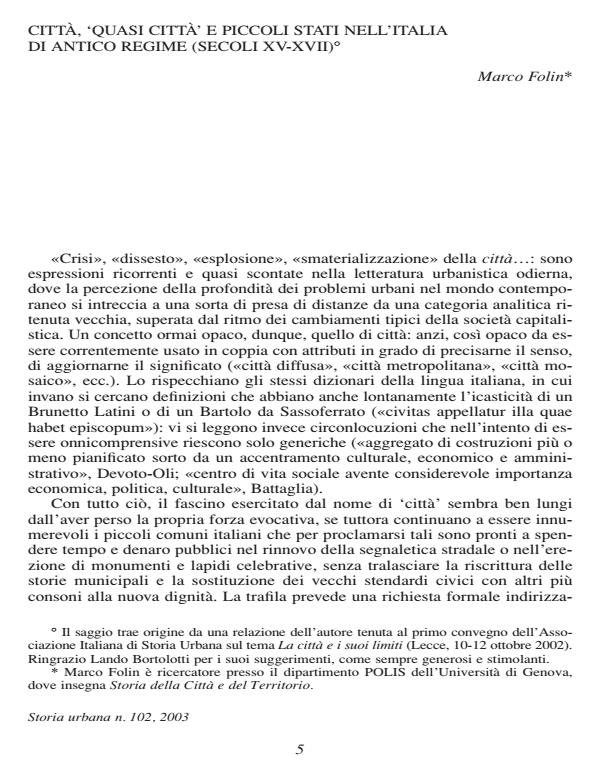Città, quasi città e piccoli stati nell'Italia di Antico Regime (secoli XV-XVII)
Journal title STORIA URBANA
Author/s Marco Folin
Publishing Year 1994 Issue 2003/102 Language Italian
Pages 19 P. File size 85 KB
DOI
DOI is like a bar code for intellectual property: to have more infomation
click here
Below, you can see the article first page
If you want to buy this article in PDF format, you can do it, following the instructions to buy download credits

FrancoAngeli is member of Publishers International Linking Association, Inc (PILA), a not-for-profit association which run the CrossRef service enabling links to and from online scholarly content.
Until the end of the Ancien Régime, the political panorama in Italy was characterized by a great number of small states which in spite of the their narrow size represented themselves as sovereigns, keeping an important role both from a political and a cultural point of view. What mainly distinguished those minor political entities from the contemporary major states was the absence of a capital city: generally, the little princes resided in minor centres, which hadn’t a bishop’s see and so were formally devoid of urban status. This handicap had heavy consequences on the political system of the small states, lacking in all those municipal structures upon which the regional states were built heirs of the ancient town communes. The differences are particularly manifest as regards to urban strategies: interacting with weakly structured societies, and in the absence of institutions capable of opposing their projects, the little princes of Italy could carry out programs of urban renewal which were comparatively much more incisive then those attempted at the same time by the major Italian sovereigns.
Marco Folin, Città, quasi città e piccoli stati nell'Italia di Antico Regime (secoli XV-XVII) in "STORIA URBANA " 102/2003, pp , DOI: